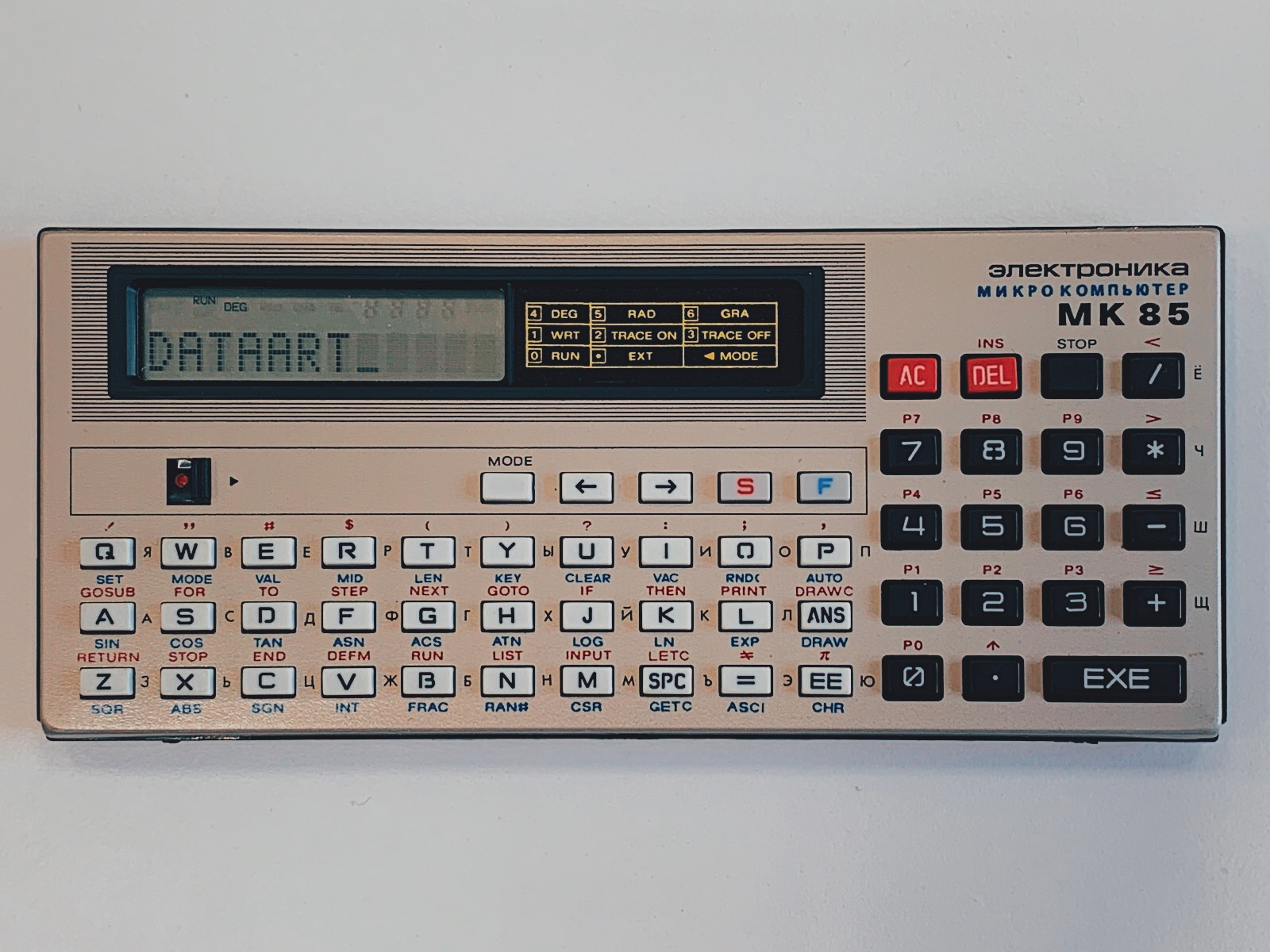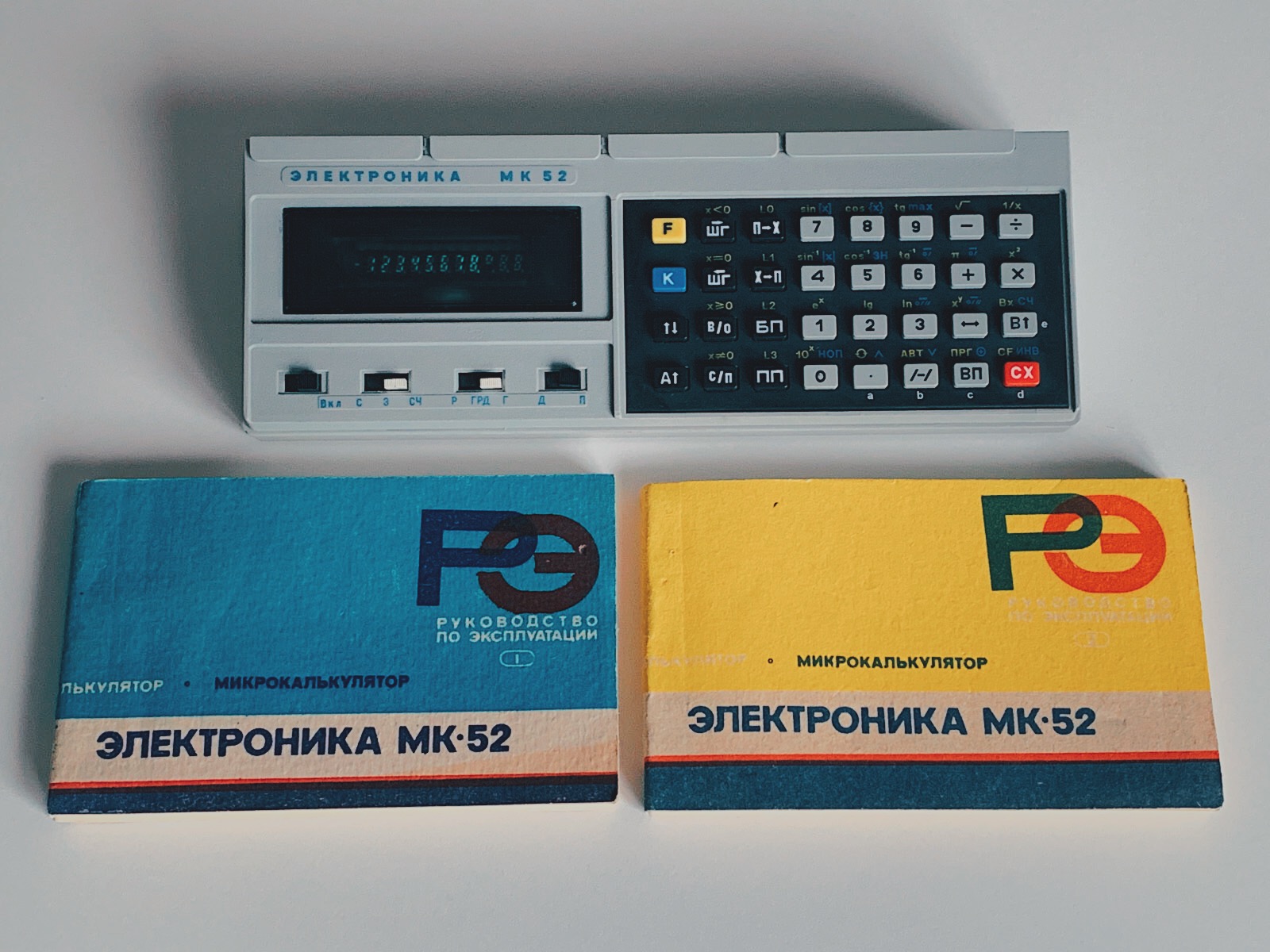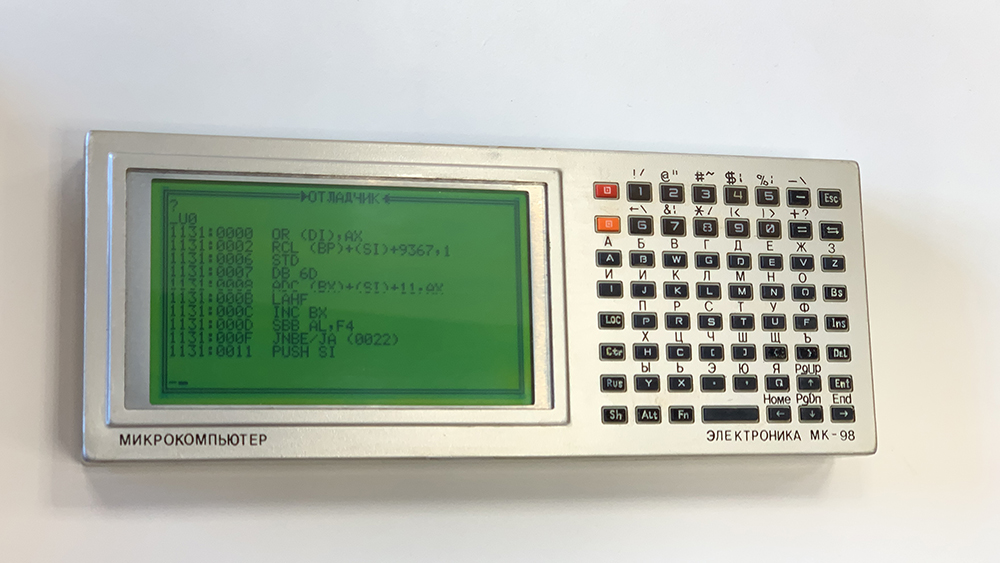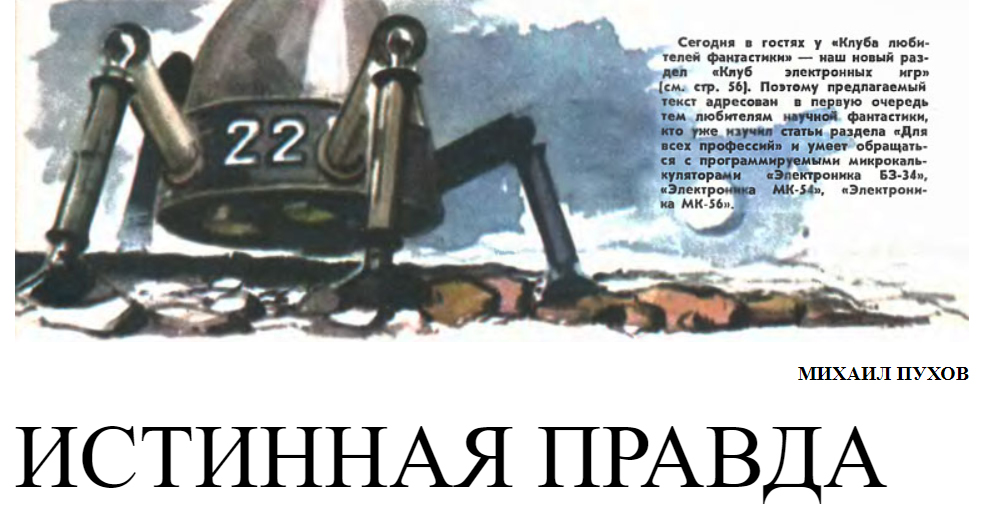Museum DataArt. Lunolet and Soviet calculators

Microcalculator "Electronics MK-85." From the collection of Sergey Frolov
We talked with collector and computer historian Sergei Frolov . We will publish a big interview with him in the near future, but for now we are talking about several wonderful items from his collection - we recorded video comments of Sergey.
The main direction of collecting for Sergey Frolov is Soviet digital electronics, primarily calculators, among which there are unique samples. We talked about counting devices from the DataArt Museum collection earlier .

Unique device "Electronics B3" from the collection of Sergey Frolov
The pre-production sample of the B3-18 Electronics calculator, assembled at the Electronics Institute, was shown to the Chairman of the USSR Council of Ministers Alexei Kosygin in 1975. The calculator was assembled on one chip (other modern devices counted much more - for example, there were seven chips in Electronics C3-15). In the gift box there was a compartment with a microcircuit, an enlarged image of the crystal and a small explanation.
Sergey Frolov launches a calculator that turns 44 this year

Calculator "Electronics MK-52" from the collection of the DataArt Museum
Electronics MK-52 is a classic programmable calculator used by Soviet engineers in the mid-1980s. The device from our collection is quite late, it was released in June 1991. The instruction manual in two parts was attached to it. But not all the functions of the calculator were documented, it was thanks to these secret possibilities that sociocultural phenomena arose, which we will discuss later.
Visualization of work with the MK-52 Electronics calculator

In 1986, the Zelenograd plant Angstrem launched the production of the Electronics MK-85 calculator. Its feature is the base language sewn in. The Japanese calculator Casio fx-700P was used as a prototype, but the entire filling was developed by Soviet engineers and programmers. The device is command compatible with PDP-11.

Calculator "Electronics MK-98", developed by the engineers of the Minsk Design Bureau "Nemiga". From the collection of Sergey Frolov
The Electronics MK-98 device is essentially more than just a calculator or even a programmable calculator. It is made on a 16-bit microprocessor compatible with i80c86, has external memory modules and a full keyboard with its proprietary layout. Equipped with a port (RS-232) for connecting external devices. A very rare device was created in 1998 and was not commercially available.
Like other Soviet schoolchildren and students, passionate about technology and electronics, in his childhood Sergei Frolov wrote popular science magazines. In the journal "Technique of Youth", in addition to relevant articles, science fiction stories were also published. The sixth issue of the journal for 1985 published the story of Mikhail Pukhov “True Truth” - the reader who mastered the skills of working with programmable calculators was asked to verify the truth of the events described. It was a kind of training before the publication of the novel “The Way Home” (“Kon-tiki”).
Sergey Frolov tells how readers using the MK-52 calculator participated in the “game through the magazine”
We give the text of the program and explanations to it:
00. IPD 01.Fx <0 02.09 03. ↑ 04. IP8 05. ÷
06.XY 07.PP 08.90 09.IPA 10.Fx ≠ 0 11.43
12.Fx <0 13.33 14.2 15. × 16. ↑ 17.IP4 18.IP3
19.- 20. × 21. IPV 22.Fx2 23. + 24.F√ 25. IPV
26.- 27. ÷ 28. ↑ 29. IP8 30. × 31.BP 32.90
33.IPD 34.Fx ≠ 0 35.86 36.IP3 37.Fx2 38.F√
39.IP7 40.- 41.Fx <0 42.87 43.IPI 44.IPA
45.C / P 46.P1 47.P2 48.Fx ≠ 0 49.43 50. ÷ 51.P8
52.IP5 53.IPD 54. + 55. ÷ 56.IP6 57. × 58.P3
59.IP4 60.- 61.IP2 62. × 63.IPV 64. + 65.PV
66.FBx 67. + 68.2 69. ÷ 70.IP2 71. × 72.IPA
73. + 74.PA 75.IPS 76.IP2 77.IP0 78. × 79.-
80.PS 81. IPD 82. IP1 83.- 84. PD 85. V / O
86.IP6 87.IP9 88.C / P 89.Cx 90.P1 91.XY 92.P2
93.Fx <0 94.50 95.IP3 96.BP 97.59

The Lunolet-1 program can be used not only for the numerical simulation of spacecraft maneuvers in the immediate vicinity of atmosphereless celestial bodies or as a training tool, but also as the basis of a number of electronic games for programmable microcalculators. Today we introduce readers to one of them. The player must, by adjusting the thrust of the engine, land the ship on the planet, and the speed at the moment of contact with the surface should not exceed the selected value, for example 5 m / s (soft landing). To play this game, you need to perform the following preparatory operations after entering the program in the PMC:
1. Generate and send an alarm signal to register 9. For example, the letter G: Cx ÷ VP VP ↑ P9.
2. Enter the constants and the initial values of variables into the machine’s memory: (acceleration of gravity on the planet’s surface, m / s2) P4; (ship mass without fuel, kg) P5; (rate of expiration of combustion products, m / s) P6; (the maximum acceleration that astronauts can withstand without losing consciousness, m / s2) P7; (initial height, m) PA; (initial speed, m / s, and upward is considered positive) PV; (fuel supply, kg) PD.
In register C, either the current time or the time remaining before the set deadline can be delayed (for example, if the life support resource is limited). To implement the first option, you need to type the command: 0 PS 1 / - / P0; for the implementation of the second: (resource, s) PS 1 P0. If the player is not interested in time, the registers C and 0 can be left out.
All source data is entered in random order.
Now you need to press V / O and then C / P. The game has begun. Each move can be divided into two stages: analysis of the situation and input of initial data for the next maneuver.
Pukhov Mikhail. "True Truth", "Soft Landing." // "Technique of youth." No. 6, p. 52, 56.
Soviet advertising microcalculators "Electronics"
All Articles